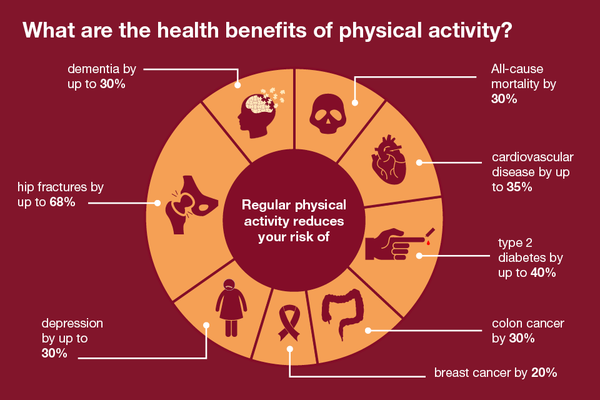
The fat in chicken is an excellent source of animal protein. However, it can be problematic if it's not cooked properly. We will be showing you how to remove the skin from chicken. It's a great way for chicken to lose fat and make it taste more succulent. Make sure your skin is dry and clean. This will help to prevent your skin from becoming infected by bacteria.
Avoid dark meat when it comes to fat content in chicken. The next fatty part is the wing. 8.06g of fat is found in a 100-gram wing. A single serving of large wings has 16.7gs of fat, while three small wings have just under half that. If you are concerned about the fat content of your favorite chicken recipe, be sure to check the fat first!

While you can remove the chicken skin, it does contain calories. The skin can be removed from the meat. However, you should keep in mind that chicken skin contains more heart-healthy unsaturated fat than saturated fat. It is important to remove the chicken's skin with care. You should avoid peeling it as it contains high-quality meat. Once the top layer of skin has been removed, you can still enjoy its flavor and texture.
Chicken fat is an excellent source of protein. It's a great ingredient in sausages and a substitute for fats from solid sources. The skin is an important part of chicken. In addition to maximizing the amount of useful fat from poultry, it also has high levels of unsaturated fatty acids, making it a viable alternative for many uses. This oil is especially useful for the meat industry as it increases plasticity.
Chicken is a good source of protein. Either order free-range chicken online or from your local farmer. You can also find free-range chicken at your local farmer. It is also available at your local supermarket. Always ensure that you buy chicken from an organic or free-range source when buying chicken. The fat on chicken skin is mostly monounsaturated. This type of fat is abundant in olive oil.

You can cook your chicken in the oven, instead of baking it. The oven temperature will affect the amount of fat that the chicken absorbs. The process of roasting, broiling, and grilling chicken breasts is the healthiest way to cook chicken breast. Do not deep fry or bread it as this will increase the fat. Barbecue sauce is another option to make the bird's skin look appealing.
FAQ
Why is it important that we live a healthy and happy life?
Living a healthy lifestyle can help you live longer and more happy lives. A healthy diet, regular exercise and good sleep habits will prevent the development of diseases such as heart disease, stroke, cancer, diabetes, and Alzheimer's.
A healthy lifestyle helps us cope better when we are faced with everyday stresses. A healthy lifestyle can also help you feel and look younger.
What's the problem with BMI?
BMI is the acronym for Body Mass Index. It measures body fat based upon height and weight. The following formula is used to calculate BMI:
The weight of a kilogram divided by its squared height in meters.
The result can be expressed as a number between zero and 25. Scores between 0 and 25 indicate obesity. A score of 18.5 indicates overweight. A score of 23 indicates obesity.
A person who is 100kg and 1.75m tall will have a BMI 22.
How often should you exercise?
For a healthy lifestyle, exercise is vital. There is no set time limit for exercising. Finding something you enjoy is key. Stick with it.
When you exercise three times per week, aim for 20-30 minutes moderate intensity. Moderate intensity means that your muscles will continue to work hard even after you finish. This type is good for burning around 300 calories.
You can walk for 10 minutes every day if that is what you prefer. Walking is low in impact and easy for your joints.
If you'd rather run, try jogging for 15 minutes three times a week. Running is an excellent way to lose weight and tone your muscles.
You should start slowly if it's your first time exercising. Begin with 5 minutes of cardio every other day. Gradually increase the time you do cardio until your goal is reached.
Statistics
- The Dietary Guidelines for Americans recommend keeping added sugar intake below 10% of your daily calorie intake, while the World Health Organization recommends slashing added sugars to 5% or less of your daily calories for optimal health (59Trusted (healthline.com)
- According to the Physical Activity Guidelines for Americans, we should strive for at least 150 minutes of moderate intensity activity each week (54Trusted Source Smoking, harmful use of drugs, and alcohol abuse can all seriously negatively affect your health. (healthline.com)
- WHO recommends reducing saturated fats to less than 10% of total energy intake; reducing trans-fats to less than 1% of total energy intake; and replacing both saturated fats and trans-fats to unsaturated fats. (who.int)
- nutrients.[17]X Research sourceWhole grains to try include: 100% whole wheat pasta and bread, brown rice, whole grain oats, farro, millet, quinoa, and barley. (wikihow.com)
External Links
How To
What does the "vitamins” word mean?
Vitamins are organic substances found naturally in food. Vitamins allow us to absorb nutrients from food. The body cannot make vitamins; therefore, they must be obtained from food.
There are two types of vitamins: water soluble and fat soluble. Water-soluble vitamins dissolve quickly in water. You can find vitamin C,B1 or thiamine, B2 or riboflavin and B3 or niacin, B3/niacin, B6/pyridoxine, folic Acid, biotin and pantothenic Acid as examples. The liver and fat soluble vitamins are stored within the liver and in fatty tissue. Vitamin D, E, K and A are some examples.
Vitamins are classified according to their biological activity. There are eight major types of vitamins:
-
A – Essential for normal growth, and the maintenance of good health.
-
C is important for nerve function and energy production.
-
D - essential for healthy bones, teeth, and gums.
-
E is necessary for good vision, reproduction.
-
K – Required for healthy nerves & muscles.
-
P – vital for building strong bones.
-
Q – aids digestion of iron and iron absorption
-
R – Required for the formation of red blood vessels.
The recommended daily allowance (RDA), for vitamins, varies depending upon age, gender, or physical condition. The U.S. Food and Drug Administration (FDA) sets the RDA values.
For adults 19 years and over, the RDA of vitamin A is 400mg per day. Pregnant mothers need 600 micrograms per days because it is vital for the development and growth of their baby. Children ages 1-8 require 900 micrograms per day. Children under 1 year old require 700 micrograms daily, while infants over one year old need 500 micrograms every day. This decreases between 9 and 12 months.
Children aged between 1-18 years require 800 micrograms of sugar per day, while overweight children need 1000 micrograms. Children who are underweight receive 1200 micrograms every day to meet their nutritional requirements.
Children between 4 and 8 years old with anemia will need 2200 micrograms daily of vitamin C.
2000 micrograms is the minimum daily intake for adults over 50 years old to maintain good health. Because of their higher nutrient needs, women who are pregnant or nursing need 3000 mg per day.
Adults over 70 need 1500 micrograms daily, as they lose 10% of their muscle every ten years.
Women who are pregnant and lactating need more nutrients than the RDA. Pregnant women require 4000 micrograms daily during pregnancy, and 2500 micrograms every day after birth. Breastfeeding moms need 5000 micrograms each day when breastmilk production occurs.